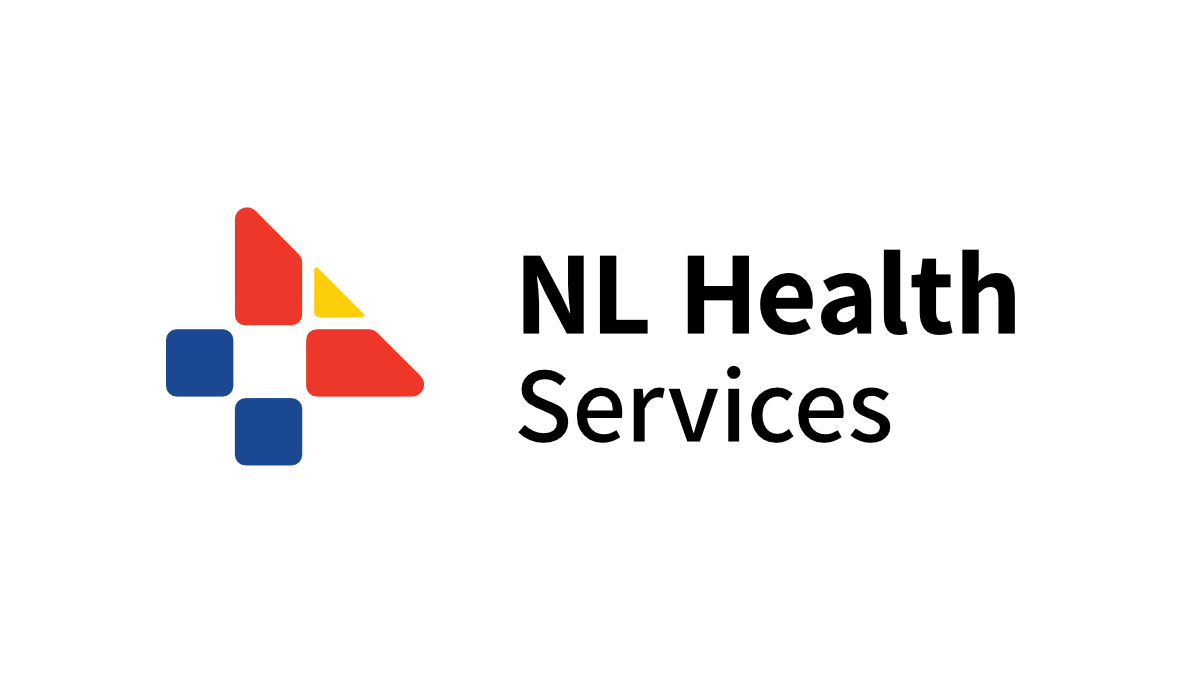Health
Virtual ER Availability at A.M. Guy Memorial Health Centre

Posted: July 11, 2024
Newfoundland and Labrador (NL) Health Services advises the public of the following temporary changes to the availability of emergency services at A.M. Guy Memorial Health Centre in Buchans due to human resource challenges. On-site emergency services are being supported through a Virtual ER physician from:
Friday, July 12 at 8:00 a.m. until Monday, July 15 at 6:00 p.m.
When a Virtual ER is operating, residents can proceed to the ER at A.M. Guy Memorial Health Centre as usual. There will be a health-care professional onsite, as well as a physician or nurse practitioner (NP) by video. For more on Virtual ERs, please visit our website.
Other Information: NL Health Services’ Health Hub is available to ALL residents of Central Newfoundland who have non-emergent medical issues, who do not have a family physician or whose family physician is not available. Health Hub clinics are open Monday to Friday from 8:00 a.m. to 8:00 p.m. and Saturday and Sunday from 12:00 p.m. to 6:00 p.m. Hours of operation are dependent on physician availability. To reach the Health Hub, please call the Gander Medical Clinic at 709-381-0112 or 709-381-0338 or the Killick Clinic in Grand Falls-Windsor at 709-292-8404. Patients should expect an increase in wait times for both in person and virtual appointments at Health Hub sites.
For more information on Health Hubs, please visit our website.
811 HealthLine is available 24/7 to provide:
- medical advice (including virtual nurse practitioner appointments which can usually be accommodated within three days);
- health information; and
- support in a mental health crisis.
For more information, please visit: https://www.811healthline.ca/.
For the most up-to-date information on temporary service closures throughout the province, please visit: https://nlhealthservices.ca/find-health-care/updates/.
NL Health Services thanks the public for their understanding as we continue to focus on providing safe and quality care for the people of the Buchans area.
-30-

Health
Rising Anxiety Disorder Rates in Black Canadian: Understanding the Challenges and Pathways to Treatment

Anxiety disorders are among the most common mental health conditions worldwide. In Canada, the prevalence of these disorders has significantly increased over the past decade. As of 2022, over 5 million Canadians aged 15 and older met the diagnostic criteria for mood disorders, including anxiety disorders. The COVID-19 pandemic exacerbated this issue, with large increases in anxiety symptoms reported between 2020 and 2021, particularly among women and young people. A 2022 study also noted a lower proportion of Black people living with anxiety disorders compared to other racialized and non-racialized groups, except for Filipino, Chinese, and South Asian groups.
Conversely, a study by Kogan and colleagues in 2022 found that close to 30% of Black participants reported clinically significant anxiety symptoms, with higher rates among young people and men. The study also highlighted a link between anxiety and exposure to racism, including racial microaggressions and discrimination.
In my private psychotherapy practice and previous work with the Substance Abuse Program for African Canadian and Caribbean Youth (SAPACCY) at CAMH, I have observed a growing number of Black individuals presenting with various anxiety disorders. These include social anxiety, generalized anxiety, and panic disorders. Assessing these disorders can be challenging due to societal and cultural factors that influence the willingness and ability of Black individuals to disclose their psychological distress.
Understanding Anxiety
Anxiety and fear are natural emotions regulated by our limbic system, essential for survival. Fear is the reaction to a real and imminent threat, such as an approaching car, while anxiety is the reaction to an anticipated threat, like the fear of being hit by a car. Both emotions activate the fight-flight-freeze response. When fear and anxiety intensify, they can lead to panic or anxiety attacks. Though often used interchangeably, these terms differ. Anxiety attacks arise from identifiable threats, whereas panic attacks are typically spontaneous, with no direct stimulus and more severe psychological and physical symptoms.
Anxiety disorders, including phobias, are characterized by excessive and uncontrollable worry or fear, co-occurring with other symptoms. The Diagnostic and Statistical Manual of Mental Disorders-5th edition (DSM-5) lists 11 anxiety disorders, with social anxiety disorder and generalized anxiety disorder being the most common. Symptoms include excessive worry, muscle tension, sleep disturbances, and difficulty concentrating. These disorders are associated with chronic diseases like hypertension and kidney disease, due to the endocrine system’s prolonged stress response, and often co-occur with substance use disorders.
Causes of Anxiety Disorders
Anxiety disorders can affect anyone, but certain genetic, psychological, and emotional factors increase susceptibility. Genetic predisposition plays a significant role, as anxiety disorders often run in families. The largest genome-wide association study (GWAS) on anxiety traits linked various genetic variants to an increased risk of anxiety disorders. These genes are associated with the hypothalamic-pituitary-adrenal (HPA) axis, which regulates stress response.
Psychologically, individuals with anxiety disorders struggle with distress intolerance, an inability to manage unpleasant emotions healthily. Distress intolerance can be exacerbated by psychosocial factors like adverse childhood experiences, neighborhood violence, racial discrimination, and frequent relocations.
Anxiety Disorders in Black Individuals
Black individuals across the African Diaspora frequently face challenges in receiving adequate mental health care. Anxiety and panic attacks can lead to intense, dysregulated presentations, often misinterpreted as aggression due to racial bias and negrophobia. This misperception can result in poor treatment and unjustified use of restraints.
Cultural idioms of distress also play a role. Black patients may describe anxiety using terms like “my spirit isn’t right” or “I’m just in my head a lot,” which clinicians might overlook. Alexithymia, the inability to describe or identify emotions, is prevalent among many Black men, who are often socialized to suppress emotions other than anger. This emotional repression can lead to panic disorder and other health issues.
Treatment for Anxiety Disorders
The goal of treatment is to help patients regulate their anxiety and regain balance. Treatment may involve psychotropic medications, such as antidepressants, and possibly antipsychotics or mood stabilizers. Alternative treatments like Chamomile are also being explored.
Traditional psychotherapy, or talk therapy, helps patients explore triggers, develop new thinking patterns, and adopt healthy coping mechanisms like breathing exercises. For those with alexithymia, therapy focuses on identifying and confronting distressing emotions. Alternative therapies may include prayer, nature walks, and community gatherings.
Anxiety disorders can be overwhelming, but there is hope. Recognizing symptoms, understanding underlying factors, and seeking appropriate treatment are crucial steps toward recovery. It is essential to learn and practice healthy coping mechanisms before anxiety symptoms become severe. By confronting and managing our emotions, we can prevent anxiety from controlling our lives.
Health
Several Vitamins Recalled Due to Potential Metal Contamination, Including Products Sold at Costco and Walmart

Several types of vitamins, including some popular brands sold at major retailers like Costco and Walmart, are being recalled due to the possible presence of metal fibers. Health Canada issued three recall statements on Friday, highlighting the affected products and advising consumers on the necessary steps.
Among the brands involved in the recall is Kirkland Signature, a staple at Costco, along with Webber Naturals and other brands sold at multiple retailers across Canada, including Walmart and Shoppers Drug Mart.
The vitamins listed in the recall are:
- Kirkland Signature: B100 Complex Timed Release
- Life: Vitamin B Complex with Vitamin C
- Option+ & Life: Prenatal Multi-vitamins 100 Tablets with Folic Acid, Spectrum Prenatal Postpartum, Multivitamins & Minerals Women, Spectrum Women 22 Vitamins & Minerals plus Lutein, Lycopene
- Webber Naturals: B50 Complex Timed Release, Most Complete Multi Womens 50+ One Per Day, Most Complete Multi Mens 50+ One Per Day, Vitamin B50 Complex
- Wellness by London Drugs, Option+ & Life: Multi Women/Femmes 50+ with Lycopene and Lutein Multivitamin and Mineral, Multivitamin & Minerals Women 50+, 50+ SPECTRUM Women/Femmes 50+ 23 Vitamins & Minerals plus Lutein, Lycopene
- Wellquest, Equate, Option+, Wellness by London Drugs & Life: Vitamin B100 Complex, Timed Release
- Natural Factors: Hi Potency B Complex, RevitalX, Super Multi® IRON FREE
- VegiDay Vegan Organic ALL IN ONE: VegiDay Vegan Organic ALL IN ONE
Health Canada advises consumers who have purchased any of the affected products to consult their healthcare provider before discontinuing use and to monitor for any health concerns.
Customers with concerns or questions can contact the recall firm directly. Additionally, any side effects or health product safety complaints should be reported to Health Canada.
For more detailed information, you can access the three Health Canada notices, which are listed under the Factors Group of Nutritional Companies Inc. recall, on the Health Canada website.
This recall serves as a reminder to consumers to stay vigilant about product safety and to follow recall advisories to ensure their health and well-being.
Health
8 Tips for Incorporating More Fruits into Your Dessert

Incorporating more fruits into your desserts is not just a way to enhance flavours, but also a smart approach to add nutritional value to your treats. While desserts are often indulged as guilty pleasures, introducing fruits can transform these moments into healthier delights, enriching them with vitamins, minerals, and fibres. Whether you’re a home cook looking to improve your family’s diet or a culinary expert aiming to innovate your menu, adding fruits offers a myriad of benefits. These range from boosting the aesthetic appeal of your dishes with vibrant colours to enhancing the natural sweetness with a lower calorie count.
The tips provided here will help you seamlessly integrate more fruits into your dessert recipes, making them irresistibly wholesome and appealing to all ages. This approach not only caters to the health-conscious consumer but also opens up a palette of fresh, tantalizing flavours that can redefine what dessert means.
Explore Variety
Diversity is key in enriching desserts with fruits. Experiment with different textures and flavours, from berries to tropical fruits. This variety ensures each bite is unique and delightful. Try combining sour cherries with sweet mangoes, or add citrus segments to balance richer desserts. Even blending frozen bananas into a creamy texture can mimic ice cream. Consider adding a double fudge bar frozen dessert to your fruit platter for an indulgent twist.
Use Fresh and Seasonal Fruits
Seasonal fruits offer the best in flavour and nutrition. Incorporate fresh, local produce into your desserts to capture peak tastiness. Fresh strawberries or peaches can elevate simple dishes like ice cream or cakes. Local farmers’ markets are ideal for finding the freshest options. Remember, the closer the fruit is grown to its consumption point, the more nutrients it retains. This approach supports local agriculture as well.
Make Fruit the Star
Create desserts where fruits are the main attraction. Dishes like fruit tarts or berry-packed pavlovas highlight the natural sweetness of fruits, reducing the need for added sugars. Let fruits dictate the dessert’s flavour profile and design, focusing on the natural colours to attract the eye. This strategy can make even simple dishes feel luxurious and crafted with care. Plus, it often leads to lighter, less calorie-dense desserts.
Opt for Healthier Preparations
Instead of always baking or frying, try raw preparations or use healthier cooking methods like grilling or poaching. Grilled pineapple or poached pears offer a delightful texture and are easy to prepare. These methods preserve the integrity and nutritional value of the fruit better than baking or frying. Cooking fruit in this way can also unlock new flavours, enhancing your dessert experience. Try brushing fruit with a little honey or maple syrup before grilling for a caramelized finish.
Experiment with Spices
Spices can enhance the natural flavour of fruits. A dash of cinnamon, cardamom, or vanilla complements fruits like apples and pears beautifully, adding complexity to any dessert. Nutmeg and ginger are also excellent with juicy fruits like peaches and plums. Experimenting with spices can transform a simple fruit dish into an exotic and enticing dessert. Such additions are simple but effective ways to elevate the taste without added sugar.
Incorporate Dried Fruits
Dried fruits are concentrated in flavour and can be a great addition to desserts. Sprinkle raisins, dried cranberries, or chopped dates over oatmeal cookies or mix them into homemade granola bars for a chewy texture. Dried fruits work well in baked goods because they provide a burst of sweetness and texture. They are also perfect for decorating cakes and adding to snack mixes. Be mindful of the sugar content in store-bought dried fruits, opting for unsweetened varieties when available.
Create Colourful Fruit Layers
Layer fruits in parfaits, trifles, or cakes to create visually appealing and delicious desserts. Layers of colourful fruits not only look spectacular, but also offer varied flavours and textures. This layering technique can be applied in smoothie bowls and gelatin desserts for a stunning visual effect. Try to choose fruits that contrast in colour and texture for the most striking presentations. These desserts are particularly appealing to children and can make eating fruit more exciting for them.
Finish with A Healthy Twist
Top off your desserts with a nutritious twist, such as a dollop of Greek yogurt or a sprinkle of nuts and seeds for extra crunch and nutrients. These additions provide a contrast in textures and increase the health benefits of your dessert. Nuts add healthy fats and proteins, making the dessert more satisfying. Consider using a drizzle of natural sweeteners like honey or agave nectar to enhance flavour without resorting to refined sugars. Such finishes not only improve taste but also boost nutritional value, aligning with a healthier lifestyle.
Incorporating fruits into your desserts is an enjoyable way to make your sweet dishes healthier and more flavourful. By using fruits in various forms, from frozen to dried, and employing them in creative ways, such as natural sweeteners or vibrant toppings, you can transform any dessert into a delightful and nutritious treat. So next time you prepare a dessert, remember these tips and enjoy the added benefits of fruits in your culinary creations.
-

 News15 hours ago
News15 hours agoGermany Braces for More Rain and Thunderstorms, Warns Weather Service
-

 News17 hours ago
News17 hours agoLotto Max winning numbers for Friday August 2, 2024
-
News18 hours ago
Canada wins silver in women’s eights rowing at Paris Olympics
-

 News23 hours ago
News23 hours agoForbidden fruit: Don’t eat the food growing in downtown Ottawa planters, says NCC
-

 News12 hours ago
News12 hours agoMan wounded in Surrey area shooting incident early Saturday, say RCMP
-

 Sports12 hours ago
Sports12 hours agoManchester City vs Chelsea LIVE!
-

 News17 hours ago
News17 hours agoPostmedia offers to purchase Atlantic Canada’s largest newspaper chain for $1 million
-

 News20 hours ago
News20 hours agoNature non-profit wants Canadians to grab cameras and get outside this weekend
















